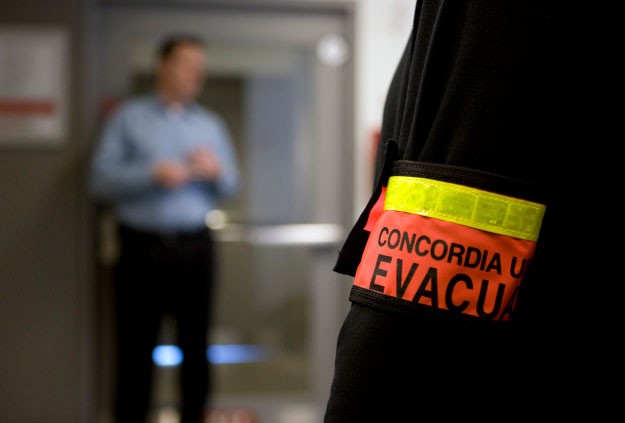Security in the city

Over the past year, Concordia’s Security Department has dealt with hundreds of individual incidents and several campus-wide events that affected the entire university community. During this summer’s microburst, for example, Concordia’s Security detail was instrumental in closing buildings, protecting research locations, and evacuating potentially dangerous areas.
“With over 60 buildings and 58,000 members, Concordia is like a small city,” says Jacques Lachance, director of Concordia’s Security Department. Like any small city, incidents happen but thanks to Lachance and his team, it all runs smoothly.
Ensuring the security of the University community is a growing group of 120 officers directed by an administrative team of fifteen.
A growing team
Ensuring the security of the University community is a growing group of 120 officers directed by an administrative team of fifteen.
This past year, Concordia’s Security Department saw the addition of three new members; an investigator, an emergency measures coordinator and a First-Aid/CPR instructor.
“They’re a great addition and we’ve been very happy to welcome to the team,” says Lachance.
Sharing strategies
A mix between an operations centre for investigation, a headquarters, and a centre for different resources, Lachance mentions that in addition to adding new positions the Security team has done a significant amount of training over the past year.
He points to tabletop and on-site exercises, which have enabled Concordia to work with other universities and share systems. This enhanced cooperation is part of the department’s ever-more-rigorous organization, which found them adopting the CSA Z1600 Emergency and Continuity Management Program.
“The CSA Z1600 Emergency and Continuity Management Program provided us with a guide for how we should adapt our emergency preparedness operations,” he says.
The process began with conducting analyses of potential emergencies, prioritizing them, placing mitigation plans into action, preparing the incident command system, and looking at how we structure our organization, explains Lachance.
“We have about seven or eight different sections to develop and we’ve now aligned our program to these new Canadian institutional standards.”
With an institution as big as Concordia, rigorous systems need to be in place so security operations run smoothly when incidents arise.
“We handle everything, from someone being hurt or trapped in an elevator to major emergency that can affect the whole community,” Lachance says. “At the same time, we have to maintain operations at the most effective level to respond to small incidents and plan for emergencies.”



